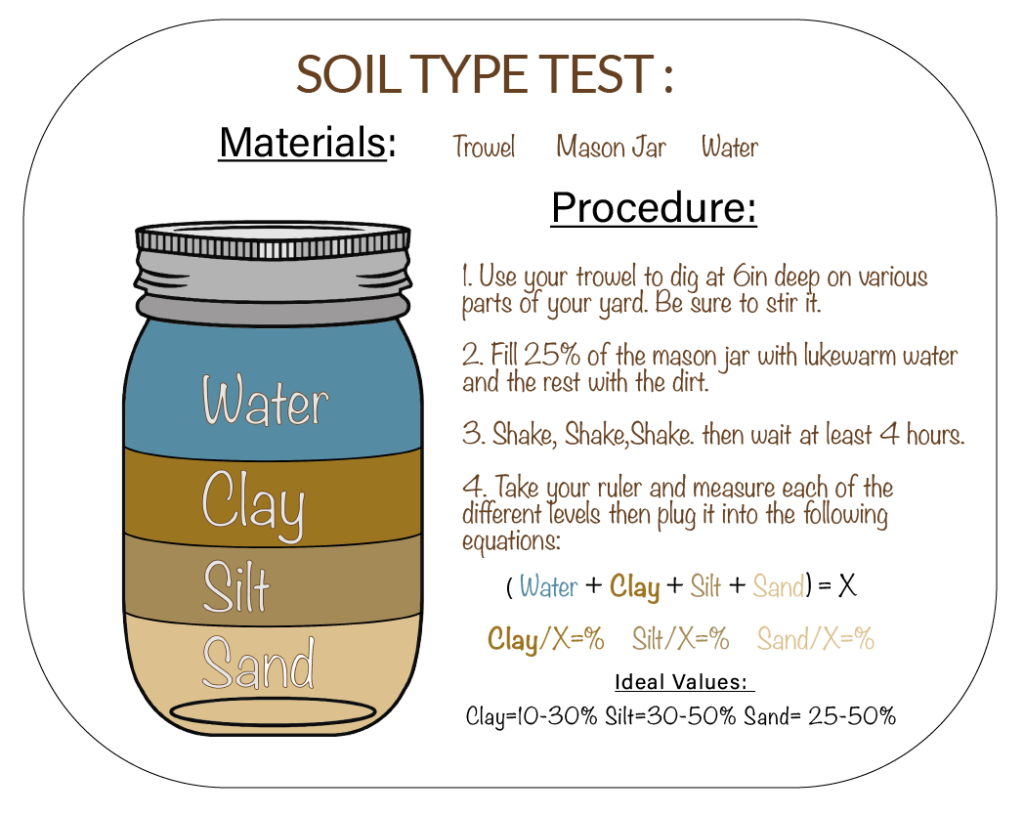Phenology: The study of recognizing patterns in the natural world in relation to weather, animals, and vegetation
Loamy: A balance between the 3 soil types

Believe it or not, Mother Nature always signals when there’s a problem. In my time working for gardening companies, the common practice for dealing with weeds was to pull them out. However, after leaving, we often found ourselves back at square one, unable to grow with the garden effectively. I couldn’t help but feel that something was amiss. If pulling a plant up by the root should make it die, why did the same weeds keep appearing in the same spot every time I visited a property? The answer lies in the plants signaling that our approach is not meeting their needs.
Gardeners should shift their focus from the external appearance of plants to their foundation. Understanding and nurturing the root system, soil health, and overall plant vitality are crucial for sustained growth and resilience in the garden.
Soil serves as the bedrock for plant growth; without a healthy foundation, building above it becomes challenging. Plants require a total of 17 elements to thrive, including minerals like nitrogen, phosphorus, potassium, and others, most of which are derived from healthy soil. When these elements are lacking, Mother Nature attempts to correct the imbalance.
While many gardeners use organic methods like pulling weeds or using herbicides to address weed issues, these are often temporary fixes. What some fail to realize is that spending hours pulling weeds won’t prevent their return. Instead, paying attention to what the weeds reveal about the soil quality can offer valuable insights.
Soil is a blend of clay, silt, and sand, each contributing to soil quality. The underground network of microbes and mycorrhiza in healthy soil works symbiotically to feed, communicate with, and protect plant roots. A balanced mixture of these soil types results in loamy soil, ideal for enhancing water filtration and retention during excessive rainfall. To identify soil types, consider the characteristics of clay, silt, and sand.
Understanding these soil types reveals that each has its strengths and weaknesses, but when combined to form loamy soil, they create a harmonious balance. None of them could stand alone because each
Clay
Silt
Sand

As I delve into phenology, questioning the information received from past supervisors, I recall asking why certain plants were being pulled, only to hear the response, “because it’s a weed.” Tired of this term being thrown around, I realize that weeds are subjective, often describing plants growing in undesirable locations. Some plants labeled as weeds actually provide ecological benefits, such as nutrient fixing in soil or creating habitats for animals. Imagine that the clover you were instructed to pull out repeatedly is attempting to fix nitrogen in the soil. Well I have and I am learning that this puzzle has more pieces than I thought:
Decipher Garden Foliage | |
Dandelion | Implies compacted soil, excess of potassium, or calcium deficiency |
Crabgrass | Favors poor, dry soil conditions that are infertile and lacks organic matter |
Wild Violet | Prefers shady, wet soils and can indicate poor drainage |
White and/or Red Clover | Implies high levels of chlorine, magnesium, and sodium in soil. It favors low nitrogen contents to fix it |
Onion Grass | Favors acidic soil with low organic matter |
Purslane | Indicates rich soil with high phosphorus content |
Plantain | Sign of tight, compacted soil |
Knotweed | Grows well in compacted, acidic, infertile soil |
Blue Grass | Wet soils with poor drainage |
Wild Strawberry | A sign of acidic soil |
Queens Anne’s Lace | Poor soil conditions without moisture |
Yarrow | Poor and sandy soil without moisture |
© 2023 Chloe | Terms and conditions | Refund and returns